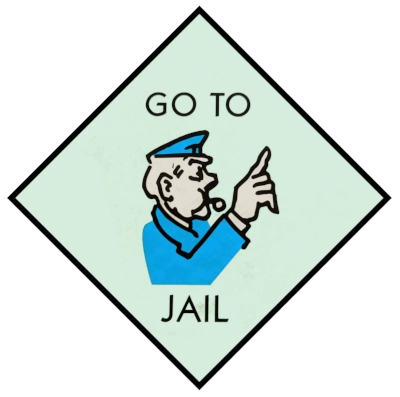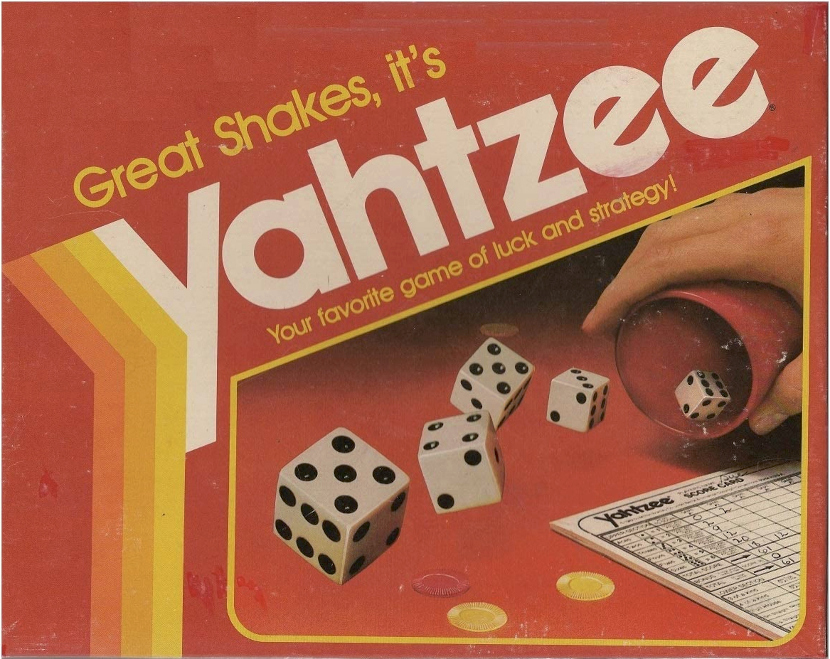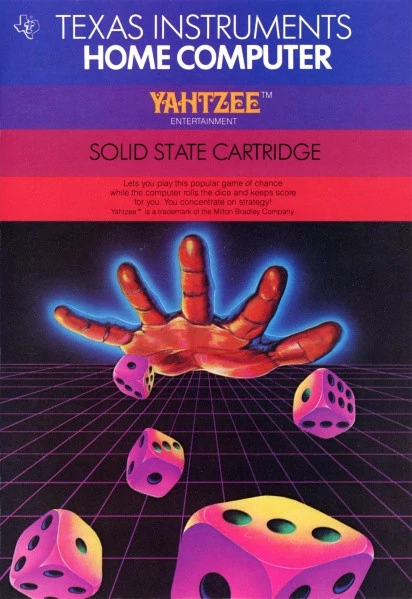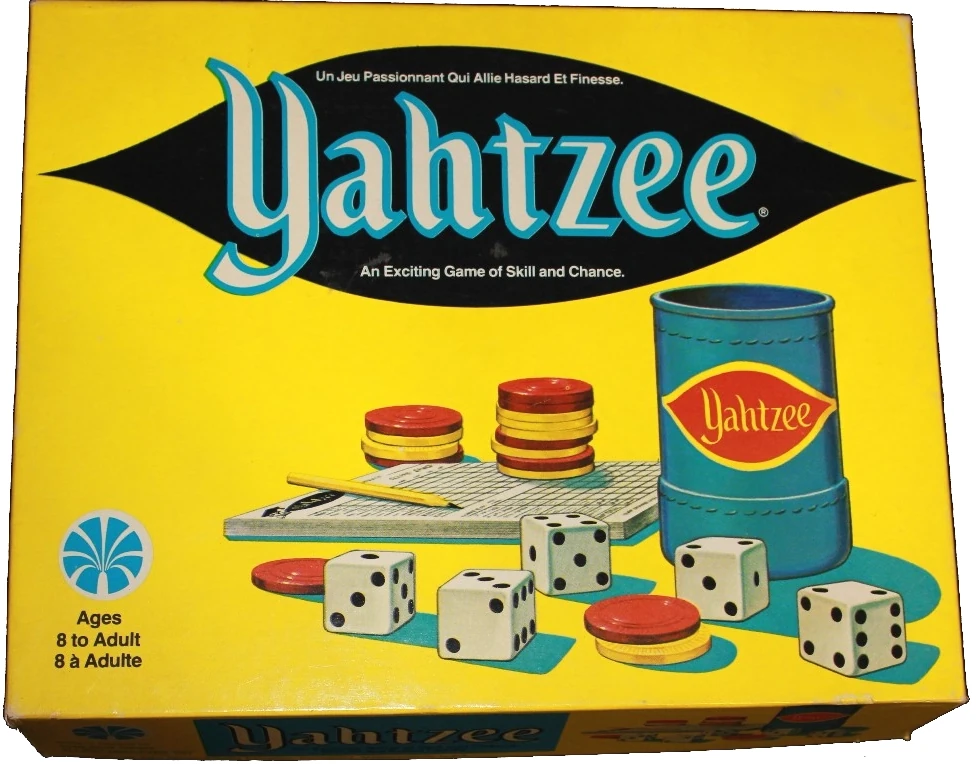Ultimate Guide to Board Game History
From ancient Egyptian tombs to modern living rooms, board games have been bringing people together for millennia. This comprehensive guide traces the fascinating evolution of tabletop gaming across civilizations and eras, revealing how these pastimes have reflected and shaped human culture. Journey through the royal game rooms of Mesopotamia, the strategic innovations of medieval Europe, the mass-produced classics of the 20th century, and today's thriving board game renaissance. This exploration connects the ancient joy of social gameplay to the experiences we still cherish today. Discover how playing board games connects you to a tradition as old as civilization itself.
The History of Board Games

Latrunculorum game board
Board games are structured forms of play that involve the movement of pieces or counters across a defined surface according to a set of established rules. These games often blend chance, skill, and strategy, offering players not only entertainment but also opportunities for mental engagement and social interaction. While modern audiences may associate board games with recreation, their original purposes were far more significant. In early societies, ancient board games functioned as symbolic systems - tools to explore fate, teach cultural values, reinforce social hierarchies, and engage with spiritual beliefs.
Historical Board Games
What purpose did the first board games serve? The earliest board games emerged in ancient civilizations as more than just diversions - they were deeply woven into the social, religious, and intellectual fabric of their time. Many games were closely tied to ritualistic practices and were thought to mirror cosmic or spiritual processes. Movement across a board could symbolize the soul’s progression, moral testing, or the balance between chance and destiny. These historical board games often served as metaphors for life, death, morality, and the human condition, helping people make sense of an unpredictable world.
- Spiritual symbolism: Games were used to represent moral or cosmic journeys, often tied to religious beliefs or rituals.
- Social reinforcement: Many games reflected or reinforced existing hierarchies, with access or outcomes shaped by status or role.
- Educational function: Board games served as tools to teach cultural values, ethical behavior, and strategic thinking.
- Political expression: Some games conveyed power structures or ideologies, subtly communicating control or resistance.
As societies advanced and diversified, so too did the role of board games. The history of board games reveals a gradual shift from mysticism and moral instruction to more complex themes of strategy, economics, and competition. Game design evolved alongside technological and cultural developments, transforming games into accessible tools of learning, communication, and entertainment. Innovations like standardized rules, printed components, and mass production democratized access to games, turning them into fixtures of both domestic life and public culture.
Today, board games represent a unique fusion of tradition and innovation. They borrow from ancient motifs while embracing new mechanics and narratives that reflect modern concerns and aspirations. From analog boards to digital platforms, the essence of the game persists: a structured space for experimentation, imagination, and connection. Understanding board game history not only uncovers how these games have changed over time but also highlights their enduring significance as reflections of human creativity, resilience, and community.
The First Board Game

Exploring the earliest known examples of board games takes us back thousands of years, deep into the dawn of recorded history. Pinpointing the absolute "first" board game is inherently difficult; organic materials decay, and our understanding is shaped by the fragmented picture provided by archaeological discoveries. What we know comes from the durable artifacts - often made of wood, stone, or faience - that have withstood the ravages of time and been unearthed from ancient settlements and burial sites.
The most ancient physical evidence for board games currently points towards the early civilizations of the Near East (Mesopotamia) and Northeast Africa (Egypt), emerging millennia ago during periods like the Bronze Age. These primal forms of play often involved moving counters across marked surfaces or tracks, frequently incorporating elements of chance through casting sticks, knucklebones, or primitive dice alongside strategic movement. Far from being mere diversions, these games appear to have been woven into the social and possibly ritual fabric of these societies, sometimes representing journeys, cosmic order, or passages through life and the afterlife.
Ancient Egypt, in particular, provides a remarkably rich and early record of board gaming culture, with evidence appearing even in Predynastic times. Among the fascinating examples unearthed from its tombs and depicted in its art, one game stands out for its incredible antiquity and enduring presence across Egyptian history. Let us begin our detailed exploration with perhaps the most iconic of these early contenders: Senet.

Ancient Origins (3500 BCE - 500 CE)
Mesopotamia and Egypt: The Origin of Board Games

The earliest known board games emerged in the cradle of civilization around 3500 BCE. Archaeologists have discovered game boards etched into temple floors and royal tombs across Mesopotamia and Egypt, suggesting that board games were enjoyed by people of all social classes, from pharaohs to peasants. These games provided entertainment but also held religious and educational significance.
Senet
Senet (3500 BCE, Egypt) stands as one of history's oldest known board games. Played on a grid of 30 squares arranged in three rows of ten, Senet combined strategy with elements of chance - a combination that would become fundamental to many future games, including modern classics like Yahtzee. Game pieces were moved according to the throw of casting sticks or knucklebones (early dice predecessors), introducing the element of randomness that makes Yahtzee so exciting. Senet held religious significance for ancient Egyptians, representing the journey to the afterlife.
The Royal Game of Ur
The Royal Game of Ur (2600 BCE, Mesopotamia) featured a distinctive track-based design with elements of chance determined by specially shaped tokens rather than dice. Archaeological excavations in the 1920s unearthed beautifully decorated game boards with intricate shell inlays, indicating the cultural importance of these games. This pattern of movement along a track would influence game design for millennia, visible in everything from traditional race games to modern children's board games.
Mehen
Mehen (3000 BCE, Egypt) was played on a spiral-shaped board resembling a coiled snake, with moves determined by the casting of sticks. The board represented the serpent deity who helped protect the sun god Ra during his nightly journey through the underworld. Like many ancient games, Mehen combined entertainment with religious symbolism. The spiral design was not only visually striking but also deeply symbolic, potentially representing cycles of time, rebirth, or protection. Players used lion-shaped game pieces, which may have symbolized strength or guardianship. Some scholars believe the game was used in ritual contexts, possibly played during funerary ceremonies or religious festivals to reflect cosmic battles between order and chaos. Though the exact rules have been lost to time, Mehen's unique layout and cultural significance offer valuable insight into how ancient Egyptians used games to mirror their worldview and spiritual beliefs.

58 Holes
Fifty-eight Holes (circa 2200 BCE, various regions) is a lesser-known but intriguing ancient board game recently brought to wider attention through archaeological discoveries in Azerbaijan, Sri Lanka, and the broader Middle East. Also known as Hounds and Jackals, this game featured a board with two parallel tracks of 29 holes (hence the nickname "58 Holes") and was likely played with pegs shaped like animal heads. Scholars believe it served both recreational and symbolic purposes, possibly reflecting a spiritual journey or race. Its wide geographic distribution hints at ancient cultural connections across continents.
Asian Classics: Strategy and Skill
In the East, board games developed with a greater emphasis on pure strategy rather than chance:
Go

Ming Dynasty
Go (originated in China around 2300 BCE) remains one of the oldest continuously played games in the world. According to legend, the game was invented by the ancient Chinese Emperor Yao to teach his son about concentration and balance. Its deceptively simple rules mask incredible strategic depth, with more possible board positions than atoms in the observable universe. Unlike Yahtzee's element of chance, Go represents pure strategy and tactical thinking.
Liubo
Liubo (China, before 200 BCE) was once immensely popular but its rules have been lost to time. Elaborate Liubo sets have been found in high-status burials, suggesting the game's importance in ancient Chinese culture.
Chess
Chess ancestors appeared in India around the 6th century CE as Chaturanga, eventually spreading westward along trade routes and evolving into the chess we know today. While Yahtzee relies primarily on chance with strategic decision-making, chess represents the opposite end of the spectrum: pure strategy with no random elements.

As chess moved through Persia (where it became known as Shatranj) and into the Islamic world and medieval Europe, its rules, pieces, and symbolism adapted to different cultures. By the late Middle Ages, the game took on its modern form, with the queen and bishop gaining more dynamic movement. The Lewis Chess Set, a famous 12th-century artifact, offers a glimpse into the game's medieval presence in Europe, with intricately carved figures reflecting both artistry and status. Chess has since evolved into a global intellectual sport, admired for its complexity and revered across cultures as a symbol of strategic mastery.

Medieval and Renaissance Games (500 - 1700)
As trade routes expanded and civilizations interacted more frequently, games spread across continents, often adapting to local cultures and preferences.
Backgammon

French variety of backgammon
c. 1280s
Backgammon evolved from the Roman game Tabula and spread throughout the Middle East and Europe. The oldest known backgammon board was found in Persia, dating around 3000 BCE. Like many enduring games (including Yahtzee), backgammon balances luck and decision-making, using dice to determine movement possibilities while leaving strategic choices to the player. This combination of chance and strategy remains a hallmark of engaging gameplay throughout board game history.
Tables games
Table games (precursors to backgammon) became wildly popular throughout medieval Europe, despite frequent attempts by authorities to ban dice games due to their association with gambling. Church records from this period contain numerous prohibitions against clergy playing dice games. These games used dice to determine movement - similar to how dice in Yahtzee determine scoring opportunities while requiring players to make strategic decisions about which scoring categories to prioritize.

predecessor of Mancala
Mancala
Mancala games spread throughout Africa and the Middle East, using simple equipment (small stones and indentations in the ground) but featuring complex strategic play. Archaeological evidence suggests mancala-type games have been played for at least 1,300 years. The accessibility of mancala - requiring minimal equipment and simple rules - mirrors Yahtzee's approachable design that allows players of all ages to participate.
Chess
Chess continued to evolve during this period, with rules standardizing across Europe by the 15th century. The queen's powers expanded dramatically during this time, transforming from one of the weakest pieces to the strongest - possibly reflecting the influence of powerful female monarchs like Isabella of Castile and Elizabeth I.
Tafl Games
Tafl games (including Hnefatafl) were popular throughout Northern Europe until chess eventually displaced them. These asymmetrical games featured uneven forces, with one player trying to help their "king" piece escape while the other attempted to capture it.

The Industrial Revolution and Victorian Era (1700 - 1900)
The industrial revolution transformed board games from handcrafted luxuries to mass-produced entertainment for the growing middle class. Innovations in printing technology, paper manufacturing, and mass production made board games more affordable and accessible than ever before.

c. early 19th century
The Game of the Goose
The Game of the Goose (first published in Italy, late 1500s; widely popularized during the 18th and 19th centuries) was one of the earliest commercially printed board games and gained renewed popularity during the Victorian era. It featured a spiraling track of numbered spaces, some beneficial and others punishing, with players racing to reach the final space. The game's simple mechanics - roll and move, with a mix of luck and moral consequence - made it ideal for family entertainment. Victorian publishers reimagined the game with various themes, from educational content to social satire. Its enduring popularity helped shape the roll-and-move genre that remains central to many modern games, including Yahtzee’s own blend of randomness and structured progression.
The Mansion of Happiness
The Mansion of Happiness (1843), one of the first mass-produced American board games, exemplified the trend of morality-based gameplay popular in the Victorian era. Like many games of the time, it involved players moving along a track, with progress determined by landing on spaces representing virtues (advancing players) or vices (penalizing them). This focus on didactic content and moral instruction was common, reflecting the era's values and establishing patterns for future track-based games aimed at family entertainment.
The Checkered Game of Life

Created by a young Milton Bradley in 1860, The Checkered Game of Life became a significant milestone in board game history. Like The Mansion of Happiness, it was a morality-based track game where players navigated life stages, aiming for a happy old age by landing on virtuous spaces (like Honesty, Industry) and avoiding vices (like Gambling, Idleness). Its innovative checkered path and compelling theme struck a chord, selling an impressive 45,000 copies in its first year alone. This massive success helped launch Milton Bradley's company and demonstrated the huge commercial potential for board games designed as wholesome family entertainment, paving the way for the industry's future growth.
The Game of Pope and Pagan
The Game of Pope and Pagan (1844) reflected religious tensions of the era, demonstrating how board games have often incorporated contemporary social issues and cultural debates into their themes and mechanics.
The Landlord's Game
The Landlord's Game (1904), created by Elizabeth Magie to demonstrate the dangers of monopolies and the theories of economist Henry George, would later be adapted into Monopoly. Magie received a patent for her game design decades before Charles Darrow claimed Monopoly as his own creation. This era saw games transition from purely abstract play to themed experiences reflecting contemporary society.

The Modern Era (1900 - 1950)
The early 20th century introduced many classics that remain popular today:
Monopoly

Monopoly became a sensation during the Great Depression, offering players a fantasy of financial success during economic hardship. Parker Brothers initially rejected the game, citing "52 fundamental playing errors," before eventually publishing it in 1935. Monopoly's success demonstrated the public's appetite for longer, more involved gaming experiences that contrasted with the simpler games of previous eras.
Scrabble
Scrabble (originally called "Criss-Crosswords") was developed in 1938 by unemployed architect Alfred Butts, who studied the front page of The New York Times to calculate optimal letter distributions. The game didn't achieve commercial success until the early 1950s, when the president of Macy's discovered it while on vacation. Scrabble's emphasis on vocabulary and letter frequency analysis represented a more intellectual approach to gaming that would influence future designs.
Cluedo/Clue

Clue (1949) pioneered the mystery-solving genre, giving players the agency to solve a murder through deduction. Created by Anthony Pratt, a solicitor's clerk from Birmingham, England, the game was inspired by the murder mystery dinner parties that captivated British households during the interwar years. Clue stood out for its innovative blend of roleplay, logic, and suspense, allowing players to embody characters, navigate a sprawling mansion, and piece together clues in a race to unmask the killer.
Much like Yahtzee, Clue combined elements of chance with deductive reasoning, requiring players to make strategic decisions based on incomplete information. Both games reflected a post-war appetite for structured yet stimulating entertainment, offering immersive experiences that engaged the mind without requiring prior knowledge or skill. These qualities helped them become household staples, fostering repeat play and intergenerational appeal.
During this period, significant advances in game manufacturing also reshaped the industry. Plastic components began to replace wood, enabling more detailed and durable pieces, while vibrant, multi-fold game boards became the norm. This evolution in production not only enhanced the tactile experience of gameplay but also opened the door for more complex and visually engaging designs. The stage was being set for the golden age of family board games - a cultural moment defined by innovation, accessibility, and mass appeal.

The Golden Age of American Board Games (1950 - 1980)
This period saw an explosion of family-oriented board games as suburban living, increased leisure time, and the baby boom created the perfect environment for game nights. Television advertising made it possible to market games nationally, creating shared cultural experiences around popular titles.
Yahtzee

Yahtzee (1956) became a worldwide phenomenon during this era. Created by a wealthy Canadian couple who played it aboard their yacht, the game was originally called "The Yacht Game." When the couple approached Edwin Lowe (who had previously helped commercialize Bingo) about manufacturing their game, he recognized its potential and secured the rights. While dice games had existed for thousands of years, Yahtzee's unique scoring system and the exhilarating chance of getting a "Yahtzee" (five of a kind) created a distinctive experience that has stood the test of time. Its blend of luck and strategy perfectly embodied the accessible family gaming approach of this golden age. By the 1970s, more than 40 million Yahtzee games had been sold worldwide.
Other notable games from this period include:

- Risk (1957), which brought global conquest to living rooms and introduced many gamers to more complex, longer gameplay sessions
- Candy Land (1955), a vibrant reissue of the original 1949 game that introduced children to board gaming with simple mechanics and colorful storytelling
- Battleship (1967), adapting a pencil-and-paper game to a commercial product with distinctive plastic components that enhanced the gaming experience
- Mastermind (1971), which combined deductive reasoning with simple gameplay in a package that sold over 50 million copies
- Dungeons & Dragons (1974), which, while not a board game per se, revolutionized gaming by introducing role-playing elements that would eventually influence board game design
This era established board games as a staple of American family entertainment, with game nights becoming a cultural institution. Companies like Parker Brothers, Milton Bradley, and Selchow & Righter dominated the market, establishing distribution channels through department stores and toy shops that would serve the industry for decades.

The European Revolution (1980 - 2000)
While American games often emphasized luck, direct competition, and relatively simple mechanics, a new style of game emerged from Europe, particularly Germany:
Settlers of Catan

1997
'Settlers'(1995) revolutionized board gaming with its resource management mechanics, indirect competition, and elegant design. Created by Klaus Teuber in Germany, it helped popularize what became known as "Eurogames." Catan sold over 30 million copies worldwide and introduced many gamers to a different philosophy of game design that emphasized strategic choices over luck, continuous player engagement (without elimination), and indirect competition. While Yahtzee's appeal comes from its perfect balance of luck and decision-making, Catan demonstrated that games could lean more heavily toward strategy while remaining accessible.
Carcassonne
Carcassonne (2000) introduced the tile-laying mechanic that would influence countless future designs. This German game by Klaus-Jürgen Wrede allowed players to collectively build the game board during play, creating a different experience with each session. Like many European designs, it features limited direct conflict between players, focusing instead on strategic positioning and point scoring.
El Grande
El Grande (1995) established the area control mechanic that would become a staple of strategic board games. Wolfgang Kramer and Richard Ulrich's design emphasized planning and territorial dominance, representing the growing complexity of European game design.
The Spiel des Jahres (Game of the Year) award, established in Germany in 1978, became increasingly influential during this period, helping to promote innovative game designs and establish quality standards for the industry. The "German-style" games (later called Eurogames) that emerged during this period were characterized by elegant rule sets, minimal luck, indirect player interaction, and high-quality components.
The Board Game Renaissance (2000 - Present)
We're currently living in what many consider a golden age of board games, with more titles published annually than ever before. Several factors have contributed to this renaissance:
- The internet has allowed gaming communities to form online, sharing recommendations and teaching new players
- Crowdfunding platforms like Kickstarter have enabled independent designers to bring their creations to market
- A growing interest in unplugged, face-to-face social activities as an alternative to digital entertainment
- Cross-pollination between American and European design philosophies
Ticket to Ride
Ticket to Ride (2004) helped bring strategy games to a mainstream audience with its accessible yet strategic play. Alan R. Moon's design has sold over 6 million copies and introduced many families to more strategic gaming experiences. Like Yahtzee, it strikes a balance between accessibility and depth that appeals to casual and serious gamers alike.
Pandemic

Pandemic (2008) popularized cooperative gameplay, where players work together against the game itself. Matt Leacock's design challenged the assumption that board games must pit players against each other, opening new possibilities for collaborative play. The game's success has led to numerous expansions and spinoffs, including Pandemic Legacy, which introduced campaign-based play with permanent changes to the game state.
Dominion
Dominion (2008) created the deck-building genre, where players construct their playing deck throughout the game. Donald X. Vaccarino's design influenced countless subsequent games and demonstrated the continuing innovation possible within the medium.
Gloomhaven
Gloomhaven (2017) brought role-playing elements to board gaming, with campaign-based play and evolving narratives. Isaac Childres' massive game (weighing over 20 pounds) demonstrated players' appetite for immersive, complex gaming experiences that unfold over multiple sessions.
Modern board gaming has embraced incredible diversity in theme, complexity, and player experience. Games now cater to specific interests and experience levels, from 10-minute party games to complex strategy experiences that take multiple sessions to complete. The industry has also become more inclusive, with designers and publishers increasingly considering representation and accessibility in their creations.
Digital Influence and Future Directions

1979
Modern board games exist in an interesting relationship with digital games:
- Many classic board games including Yahtzee have successful digital versions on various platforms, introducing these games to new generations
- Board game apps serve as tutorials for physical games, lowering the barrier to entry for complex designs
- The tactile, social nature of physical board games provides an experience digital games cannot replicate, contributing to their enduring appeal
- Digital tools have enhanced game development, allowing designers to playtest and refine games more efficiently
- The future may bring more integration between physical and digital experiences, with companion apps, augmented reality elements, and QR codes appearing in modern designs
The COVID-19 pandemic accelerated interest in board gaming as people sought home entertainment, with many games finding audiences through online play platforms before transitioning to physical releases. Industry experts predict continued growth, with particular expansion in "hybrid" games that combine physical components with digital elements.
Yahtzee's Place in Board Game History

Yahtzee represents a perfect middle point in board game evolution - combining the ancient tradition of dice games with modern scoring systems and mass production. Its enduring popularity demonstrates how the fundamental appeal of board games remains constant through the ages: bringing people together through a perfect blend of chance, choice, and social interaction.
With over 50 million games sold by the 1990s and versions now available in digital formats across multiple platforms, Yahtzee has transcended its physical origins to become a cultural institution. Its elegant simplicity - requiring only dice, a cup, a scorepad, and pencil - connects it to ancient games played with knucklebones and sticks, while its scoring system introduces strategic depth that has kept players engaged for generations.
While complex strategy games and elaborate themed experiences continue to expand the boundaries of what board games can be, Yahtzee reminds us that sometimes the most enduring games are those with simple rules, quick play, and just the right balance of luck and skill - principles that have defined great games since the days of Senet and the Royal Game of Ur.
This connection between ancient gaming traditions and modern game nights around the Yahtzee dice cup represents the unbroken thread of human experience provided throughout board game history. As we roll the dice today, we participate in a tradition that stretches back to the very beginnings of human civilization - a tradition of coming together, engaging our minds, and simply having fun.
Is Yahtzee a Board Game?
"Hey wait," you may be thinking - "Since when do you need a board to play Yahtzee?" Well now you've gone and opened a bag of worms. Technically of course, the classic version of Yahtzee doesn't utilize a game board in the traditional sense, relying instead on dice, a cup, and scorecards. This sometimes leads to debate about whether it strictly qualifies as a "board game." However, it shares many elements central to the board gaming experience: turn-based play, score tracking, strategy mixed with chance, and social interaction around a common playing area.
Furthermore, some official variants, such as Showdown Yahtzee, do incorporate a physical board, further blurring the lines. Ultimately, while purists might classify it solely as a dice game, Yahtzee certainly occupies a prominent and beloved place within the broader culture and history of tabletop games, often enjoyed alongside traditional board games.




